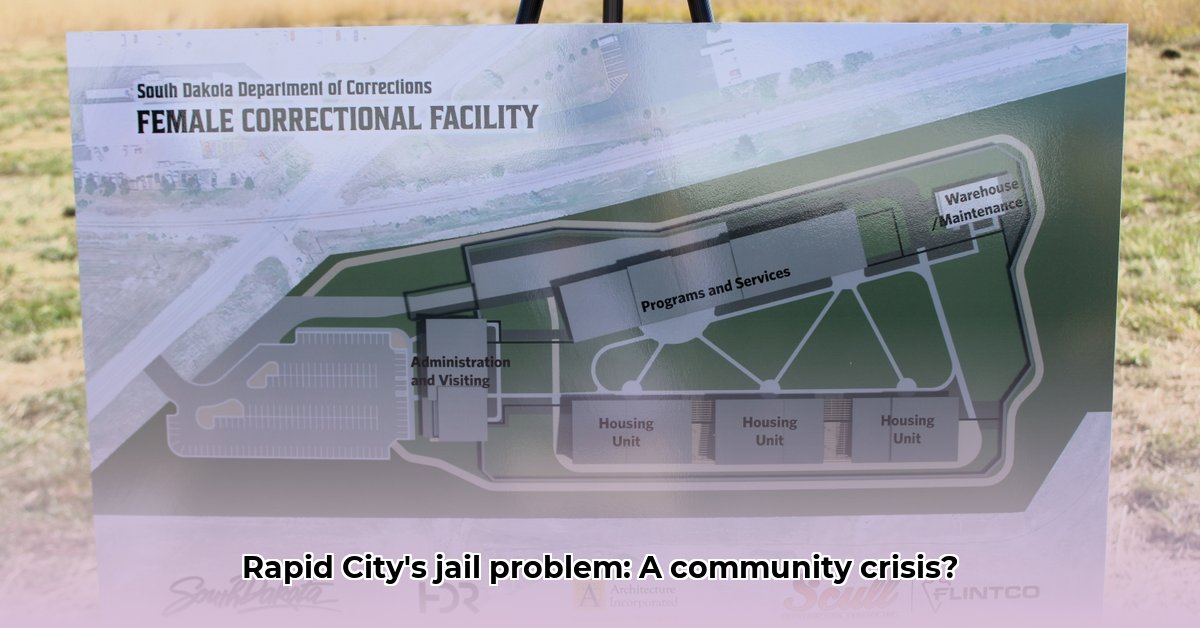
Understanding the Complexities of the Rapid City Minimum Unit
The Rapid City Minimum Unit (RCMU), alongside its sister facility, the Rapid City Community Work Center (RCCWC), plays a critical role in South Dakota's corrections system. However, beneath the surface of routine operations lie significant challenges impacting inmates, staff, and the surrounding community. This investigation reveals systemic issues demanding immediate attention and a comprehensive approach to reform. The human cost—the struggles of individuals attempting reintegration, the strain on correctional officers, and the community's concern for safety—cannot be overlooked. For more information on similar facilities, see this resource.
"We're not just dealing with statistics here," explains Dr. Anya Sharma, Professor of Criminology at the University of South Dakota. "We're talking about human lives, families, and the overall well-being of our community. The success of the RCMU directly impacts us all."
One striking example is the case of Mark (name changed for privacy), a former RCMU inmate who, despite participating in work release programs, struggles to secure stable employment. His experience highlights a broader issue: the lack of sufficient support systems for successful reintegration into society. Is the current system truly equipping inmates with the necessary tools for a sustainable future?
Unveiling Systemic Flaws: A Lack of Data and Effective Programs
The RCMU faces a series of interconnected problems, starting with a critical absence of reliable data. The lack of comprehensive statistics on recidivism rates, program effectiveness, and other key performance indicators hinders effective evaluation and targeted improvements. How can we assess the success of rehabilitation programs without robust data collection and analysis? This information void prevents us from understanding what works and what doesn't.
Furthermore, the effectiveness of current rehabilitation programs is questionable. Many inmates lack access to crucial resources, including job training, substance abuse treatment, and mental health counseling. “The current programs often fail to address the individual needs of the inmates,” notes Officer John Miller, a veteran correctional officer at the RCMU with 15 years of experience. "We are often treating symptoms instead of addressing the root causes of their criminal behavior." This deficiency undermines the very purpose of rehabilitation.
The situation is further complicated by persistent security concerns, despite the RCMU's minimum-security classification. Concerns remain regarding staffing levels and the potential for incidents. The challenges are not unique to the RCMU; similar concerns exist for other minimum-security facilities in South Dakota. Are current security protocols sufficient to ensure the safety of both inmates and staff?
The RCCWC's community service projects, while well-intentioned, also require further scrutiny. What is the actual impact of these projects on recidivism rates? Are these programs providing inmates with valuable skills that translate into meaningful employment? Substantial evidence of their true effectiveness is needed to justify their continued operation.
A Path Forward: Step-by-Step Solutions for a More Effective System
To create a more effective and humane corrections system, a multi-pronged approach is paramount:
- Comprehensive Data Collection and Analysis: Implement a robust data collection and analysis system to track recidivism rates, program outcomes, and other key metrics. This data-driven approach provides the necessary evidence for evaluating existing programs and developing targeted improvements.
- Evidence-Based Rehabilitation Program: Prioritize evidence-based rehabilitation programs tailored to individual needs. This involves expanding access to job training, educational opportunities, substance abuse treatment, and mental health support. Collaboration with community organizations can provide essential individualized care and mentorship.
- Enhanced Security Protocols: Enhance security protocols through staff training, updated technology, and regular security assessments to identify vulnerabilities and ensure the safety of both inmates and staff.
- Strengthened Community Partnerships: Foster stronger partnerships with local businesses and communities. Expanding work release programs that provide relevant job experience and offering support for successful reintegration into society are crucial strategies. Community buy-in is vital to ensuring the success of these initiatives.
- Improved Staff Recruitment and Retention: Address staff shortages by enhancing salaries, benefits, and working conditions while providing better training, communication, and support to create a positive work environment.
Conclusion: Building a Better Future Through Collaboration
The RCMU faces significant challenges, but with a dedicated and collaborative effort, meaningful improvements are possible. Addressing these issues requires the active participation of inmates, facility administration, community leaders, families, rehabilitation professionals, and the South Dakota Department of Corrections. By focusing on data-driven improvements, evidence-based rehabilitation, and strong community partnerships, we can create a more effective and humane corrections system that promotes both public safety and successful reintegration. The future of the RCMU and the community it serves depends on our collective commitment to this critical endeavor.